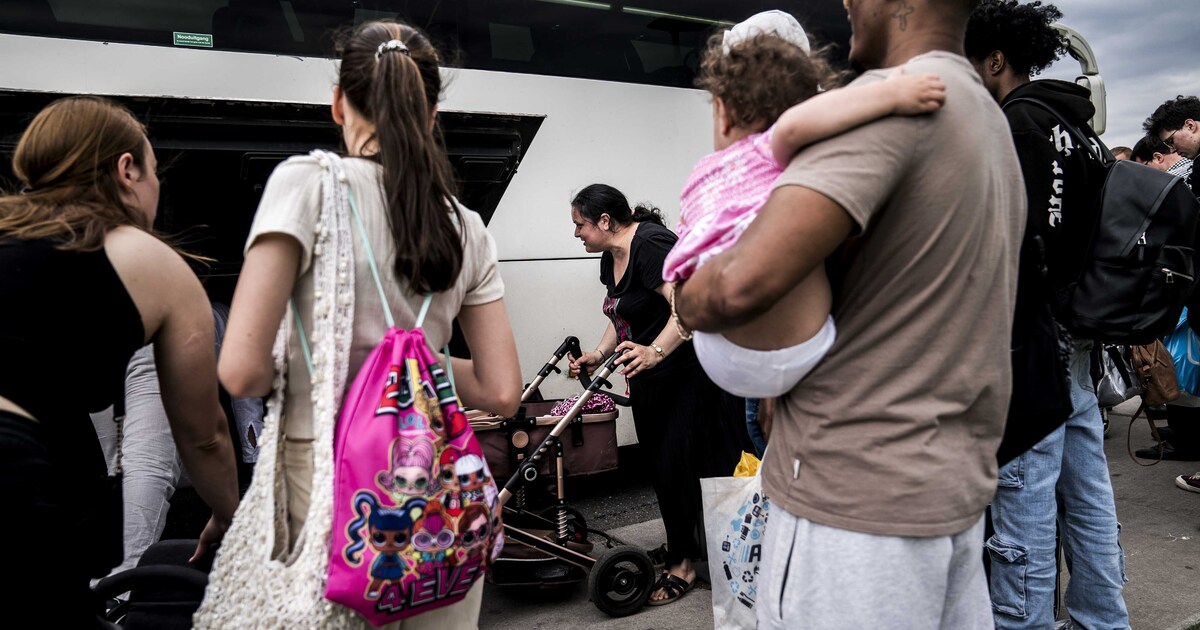
The Immigration and Naturalization Service (IND) already knew that, three weeks after the fall of the government (July 7), refugee reunification rarely occurs. In early August, the service drafted a memorandum containing available data on “cumulative family reunification.” The memo contained a table showing that, on average, a maximum of one hundred refugees per year successfully accumulated a “reunification journey after reunification.”
The note with the figures was retained within the IND and not published. Only on February 17 of this year, seven months after the fall of the cabinet and three months after the elections to the House of Representatives in November, did the IND make public the figures on the phenomenon of “reunification upon reunification.” In the end, this information barely deviated from what the IND already knew in August: family reunification trips are of little importance in terms of size. Of all family reunification requests granted, less than 1 percent are based on cumulative family reunification.
All this emerges from some documents that the outgoing Secretary of State, Eric van der Burg (asylum), shared with the House of Representatives on Friday afternoon, following a request for information from NSC deputy Caspar Veldkamp. Among these documents is the IND note that was drafted on August 2 but was never sent. In an attached letter, the Secretary of State emphasizes that neither he nor the outgoing minister, Dilan Yesilgöz, saw this note at the time. The Secretary of State was informed of the figures on January 8, five weeks before their publication by the IND.
politically sensitive
The existence of the memo containing figures on travel related to family reunification is a politically sensitive matter. The issue played an important role in the fall of the cabinet. The VVD in particular considered family reunification as a major issue, while D66 and ChristenUnie in particular had doubts about it. An agreement was never reached on the issue.
A day after the cabinet fell, VVD leader Yesilgöz spoke on the Op1 talk show about what she called “nareis nareis op nareis.” This happens “many times,” emphasized Yesilgöz, who supported his argument with the example of refugees bringing their father, after which the father brings his new wife and her family to the Netherlands and then the new wife too. Bring your parents. .
Shortly after that broadcast, the Dutch Refugee Council and migration experts expressed doubts about the scope of family reunification. Nobody recognized the problem. It could even be considered “fiction.” But there were no exact figures, the IND then stressed.
Concept note retained in the IND
According to the August concept note, behind the scenes of the IND the social relevance of the figures was very clear. Service officials write: ‘After the fall of the cabinet, the possibility of limiting travel in relation to family reunification was discussed. Therefore, the debate on family reunification has also acquired political importance.’
The next paragraph states that ‘almost all national media’ have requested more information about (particularly the number of) family reunification trips. […] “With the public publication of the fact sheet on family reunification on ind.nl, all media can be informed at the same time and we are transparent about the figures,” IND officials said in an internal document.
But the media was not informed and transparency about the figures only came long after the elections to the House of Representatives. The concept note was blocked within the IND, according to the published documents. By whom it is not known. The reason: the figures “do not give a complete picture.” For this reason, IND officials continued searching for months for the complete figures, which, once published, ultimately differed little from what was already known.
“It affects thousands of people”
Due to the lack of numbers, the phenomenon of family reunification took on a life of its own during the campaign. Just before the elections, VVD leader Yesilgöz said in an interview by Volkskrant that family reunification is not a minor phenomenon. “It’s thousands of people; we don’t know exactly how many,” she said.
This claim was refuted in February when the IND published the actual figures. Later, Yesilgöz acknowledged in responses to questions from parliamentarians that he had no information with which to substantiate this high figure. She had thought of them herself.
Also read:
With far-reaching asylum plans, the new right-wing cooperation consciously crosses the limits of the law
PVV, VVD, NSC and BBB say they are making history with the most right-wing asylum policy in history. The parties consciously cross the limits of the law with their asylum plans.